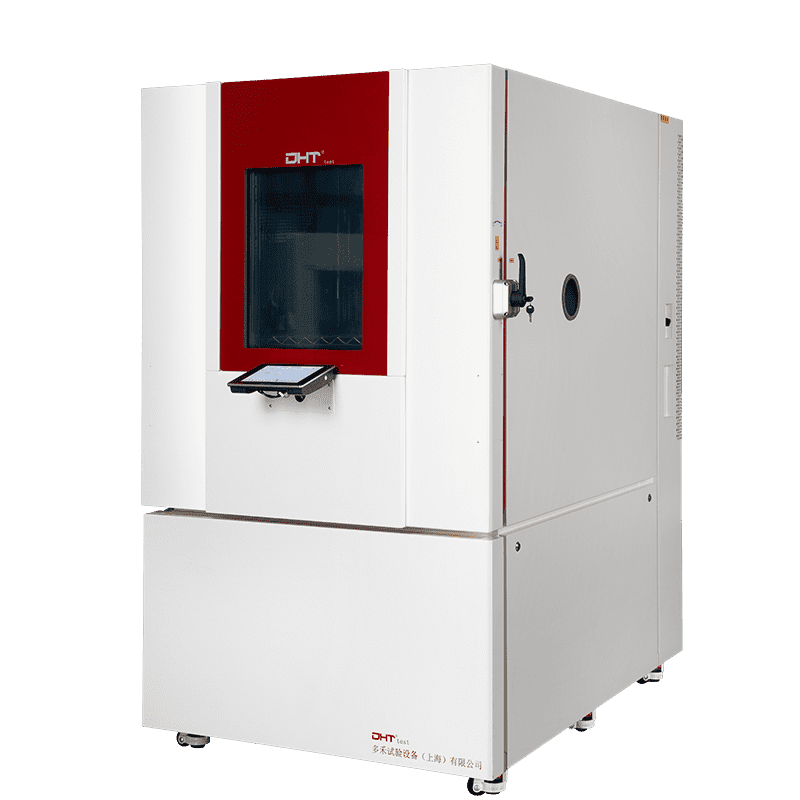Written by Robin
Senior Engineer, Doaho Test (DHT®)
In the evaluation of material corrosion resistance, the salt spray test chamber plays a vital role. It is widely used across industries such as hardware, electroplating, automotive components, aerospace, coatings, and plastics to simulate the corrosive effects of marine or high-salinity environments. As a long-cycle, high-intensity environmental testing device, the chamber’s operational stability directly impacts the accuracy and repeatability of test data.
However, the inherently harsh and corrosive testing environment means the salt spray chamber is constantly “under stress.” Without proper daily maintenance, it may suffer from uneven spray distribution, system blockages, temperature control failures, and seal degradation — all of which can lead to inaccurate results or even premature equipment failure. Conversely, a systematic maintenance program can significantly prolong the chamber’s service life, reduce downtime, and enhance operational efficiency.
Drawing on extensive real-world user experience, this article outlines seven critical maintenance actions to extend the lifespan of your salt spray test chamber — along with a practical monthly maintenance checklist — to help you establish a reliable and efficient equipment management system.
Keep the Spray System Clear – The Foundation for Consistent Testing
The spray system is the heart of the salt spray chamber. Any clogging or uneven atomization will disrupt the consistency and reliability of the corrosive environment.
Daily maintenance tips:
- Regularly inspect the nozzles for salt crystal blockage, especially after high-concentration tests.
- Rinse the spray piping with purified water after each test to prevent salt buildup.
- Check the air supply filter for water or oil residues that could contaminate the spray system.
- Maintain stable spray pressure within the recommended range (typically 0.07–0.17 MPa) to ensure proper atomization.
A comprehensive check of the spray system is recommended at least once a week.
Clean the Heating Tank to Prevent Scale Build-Up and Corrosion
The chamber regulates internal humidity and temperature via a water tank or humidification system. In hard water conditions, mineral deposits easily form scale, reducing heating efficiency and potentially damaging components.
Key maintenance practices:
- Use purified or deionized water to minimize calcium and magnesium deposits.
- Completely drain and clean the water tank monthly to remove sediment.
- Check the float switch for responsiveness to avoid dry burning of the heater.
- If scale buildup is detected, clean with an environmentally friendly descaling agent to avoid corrosion.
Special attention is needed in regions with hard water to prevent long-term system damage.
Always Use Freshly Prepared Salt Solution to Avoid System Blockage
The salt solution is the source of the corrosive environment. If it becomes contaminated or crystallizes, it can block the spray system, reduce corrosion performance, or even damage internal pipelines.
Recommended practices:
- Prepare a fresh salt solution before each test — never use old or stored liquids.
- Drain any remaining solution immediately after the test; do not reuse it.
- Follow the standard salt-to-water ratio strictly (typically 5% NaCl).
- Rinse the solution tank and spray lines regularly to prevent salt buildup.
It is generally advised to replace the salt solution at least once a week to maintain test consistency and safety.
Check the Seal Structure to Prevent Environmental Leaks
A tight seal is crucial for maintaining a stable temperature and humidity inside the chamber. Aged gaskets or loose door locks can result in leaks, leading to fluctuating test conditions and unreliable results.
Maintenance checklist:
- Wipe and inspect rubber gaskets regularly; replace if hardened or cracked.
- Ensure door locks are secure and lubricate if necessary.
- Check the viewing window for fogging or water accumulation — clean or replace if visibility is impaired.
A well-sealed chamber not only ensures testing precision but also improves energy efficiency.
Maintain the Control System – The Brain of the Chamber
The control system governs temperature, humidity, spray timing, and other critical parameters. Any malfunction can compromise test accuracy and data integrity.
Key points to monitor:
- Calibrate temperature and humidity sensors monthly to ensure precision.
- Test control panel responsiveness — buttons and touch screens should function smoothly.
- Backup and review data logs regularly to ensure traceability.
- Inspect electrical connections and power interfaces to prevent faults due to aging wiring.
In case of anomalies, contact the manufacturer’s technical support immediately instead of attempting unauthorized repairs.
Keep the Chamber Interior Clean to Prevent Cross-Contamination and Corrosion
Salt spray particles are highly corrosive and tend to deposit on chamber walls, sample racks, and trays. If not cleaned regularly, they can corrode the chamber and contaminate future test batches.
Cleaning best practices:
- Rinse the chamber walls and sample racks with purified water after each test.
- Perform a deep clean monthly using a neutral, eco-friendly cleaner.
- Avoid using strong acids or alkalis that could damage protective coatings or seals.
A clean interior is essential for accurate testing and prolonged equipment life.
Establish a Systematic Maintenance and Record-Keeping Routine
Relying solely on ad hoc maintenance or emergency repairs is unsustainable. A structured maintenance program is key to long-term reliability and cost control.
Implementation suggestions:
- Define monthly, quarterly, and annual maintenance tasks and schedules.
- Assign responsible personnel to ensure tasks are completed on time.
- Document each maintenance session to enable tracking and troubleshooting.
- Arrange annual professional inspections from the manufacturer for thorough system checks.
A disciplined approach to maintenance will greatly reduce failures and maximize the chamber’s return on investment.
Monthly Salt Spray Test Chamber Maintenance Checklist (Suggested Items)
Incorporate the following actions into your monthly routine for optimal results:
- Clean and inspect spray nozzles and the spray system.
- Flush and clean the solution tank; replace the salt solution.
- Drain and descale the water tank; inspect the heating system.
- Check gaskets, door locks, and viewing window for integrity.
- Calibrate sensors; verify data recording functions.
- Inspect power cables and grounding systems.
- Perform a full interior salt residue cleaning.
By consistently performing these maintenance actions, you can extend the chamber’s service life by 3 to 5 years, improve test reliability, and lower long-term operational costs.
Final Thoughts: Maintenance Is the Starting Point of Quality Assurance
Salt spray testing plays a pivotal role in surface corrosion resistance evaluation. Its reliability directly determines whether a product can withstand harsh real-world environments. A well-maintained salt spray chamber is your strongest ally in ensuring test quality.
Don’t let “small issues” escalate into major downtime or equipment failure. Meticulous maintenance is the simplest, most effective investment in long-term testing performance.
If you’re looking for expert maintenance training or custom service packages, feel free to contact the DHT® technical support team. We’re here to provide dependable, long-term support to keep your equipment running at peak performance — test after test.
People also ask
How Can I Extend the Lifespan of My Salt Spray Test Chamber?
Regular maintenance is the key. Focus on seven essential areas: keeping the spray system unclogged, cleaning the heating tank, using fresh salt solution, checking seals, maintaining the control system, cleaning the chamber interior, and implementing a documented maintenance routine. A proper program can extend your chamber’s life by 3–5 years.
What Should Be Included in a Monthly Salt Spray Chamber Maintenance Checklist?
A standard monthly checklist should include: nozzle inspection and cleaning, salt solution replacement, water tank descaling, gasket and lock integrity checks, sensor calibration, electrical inspection, and interior chamber cleaning. Consistent monthly care ensures accurate test results and reduces costly failures.
Why Is Using Fresh Salt Solution Important in Corrosion Testing?
Old or contaminated salt solution can block the spray system, reduce corrosion accuracy, and damage internal components. Always prepare a fresh 5% NaCl solution before each test and flush the system afterward to prevent buildup and ensure test reliability.


